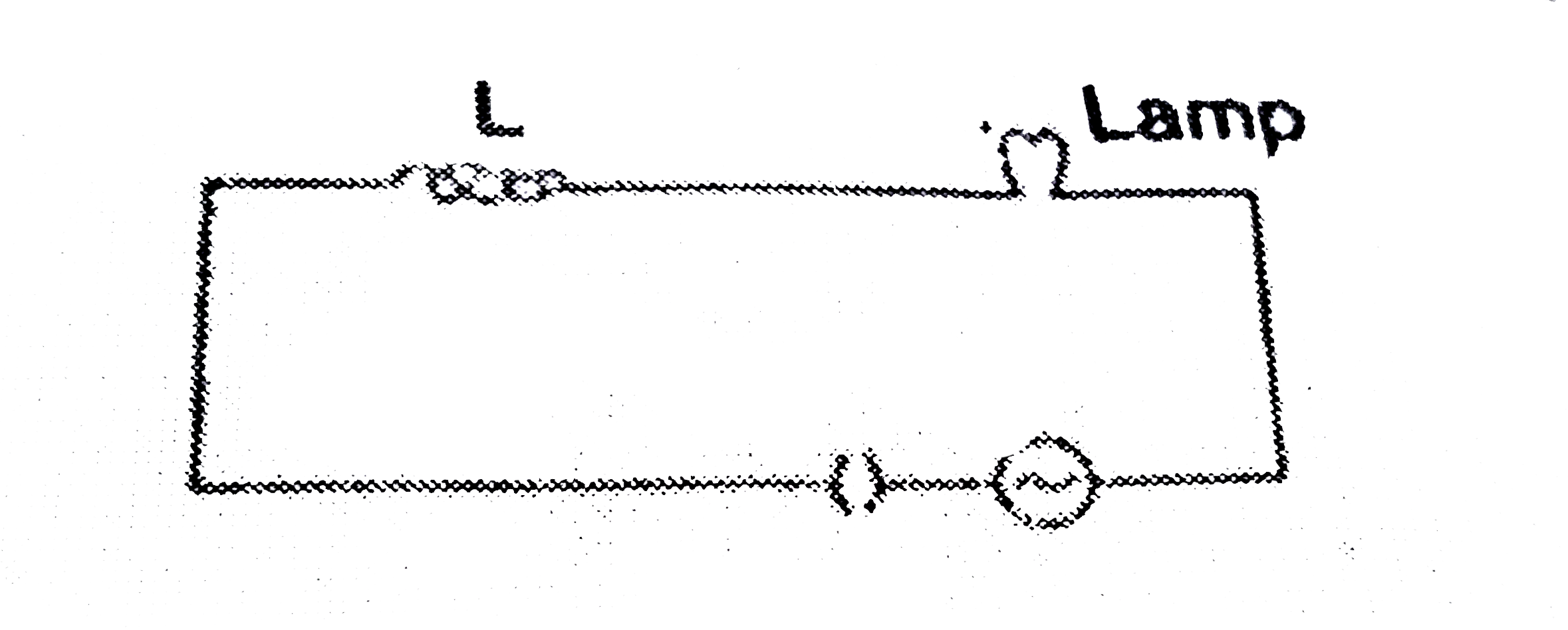The circuit shownin Fig. 7.33 contains a battery , a rheostat , and two identical lamps. What will happen to the brightness of the lamps if the resistance of the rheostat is increased?

When resistance of rheostat is increased, the resistance of circuit increases, so current in main circuit decreases. As a result the potential difference across P decreases and that across Q increases, so brightness of bulb P decreases and that of Q increases.
Similar Questions
In the circuit, shown in fig. what will be the effect on the brightness of blub if frequency of the source ω is increased?

View SolutionThe brightness of an incandescent light bulb is con- trolled by a regulator. The regulator is a variable resistor connected in series with the bulb. What happens to the colour of the light given off by the bulb as the resistance of the regulator is increased? What happens to the average energy of photons given out by the bulb? Does it increase?
View Solution
Knowledge Check
A, B in the figure are identical lamps. What changes occur in the brightness of the lamps when its switch S in closed?
 ABrightness of A increases but that of B decreasesBBrightness of A remains the same but that of B decreasesCBrighness of both A and B decreasesDBrightness of A increases but that of B remains the same
ABrightness of A increases but that of B decreasesBBrightness of A remains the same but that of B decreasesCBrighness of both A and B decreasesDBrightness of A increases but that of B remains the sameIn the circuit shown in Fig. If both the lamps L1 and L2 are identical.
 Atheir brightness will be sameBL1 will be brighter than L2CAs the frequency of supply voltage in increased, brightness of L1 will increase and that of L1 will decreaseDOnly L2 will glow because the capacitor has infinite resistance
Atheir brightness will be sameBL1 will be brighter than L2CAs the frequency of supply voltage in increased, brightness of L1 will increase and that of L1 will decreaseDOnly L2 will glow because the capacitor has infinite resistanceThe circuit shown in figure consisting of three identical lamps and two coils is connected to a direct current source. The ohmic resistance of the coils is negligible After some time switch S is opened. Which of the following statement(s) is // are correct for the instant immediately after opening the switch?
 AAll the lamps are turned offBBrightness of B2&B3 remains unchangedCBrightness of B1 suddenly increasesDInsufficient data to draw any conclusion.
AAll the lamps are turned offBBrightness of B2&B3 remains unchangedCBrightness of B1 suddenly increasesDInsufficient data to draw any conclusion.
(i) When an AC source is connected to an ideal inductor show that the average power supplied by the source ever a complete cycle is zero.
(ii) A lamp is connected in series with an inductor and an AC source. What happens to the brightness of the lamp when the key is plugged in and an iron rod is inserted the indcutor ? Explain.

View SolutionIn the circuit shown in Fig. 4.64, the battery has an emf of 12.0 V and an internal resistance of 5R/11. If the ammeter reads 2.0 A, what is the value of R ?

View SolutionIn the circuit shown in Fig.a voltage V is connected across lamp L. What changes would occur at lamp and the voltage V, if the resistance R is reduced in value?

View SolutionThe given figure shows an electric circuit in which a lamp L is connected .What happens to the brightness of the lamp L when the switch S is closed ?
(Box represents extra resistance in the circuit.)

View SolutionIn the two circuits shown, all the light bulbs and batteries are identical. If A,B and C repectively denotes the brightness of light bulbs A,B & C then

View Solution
